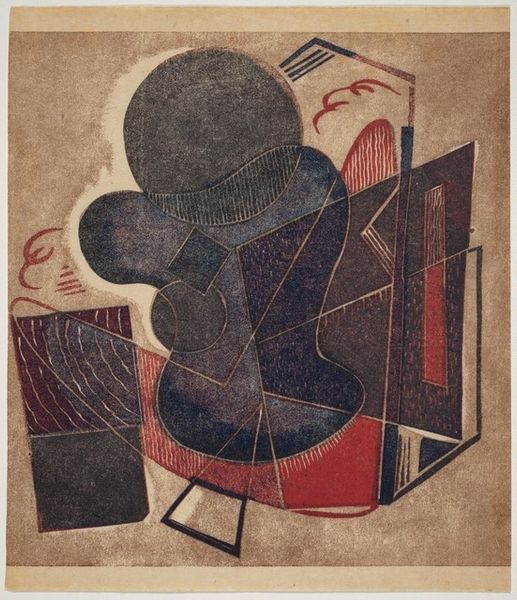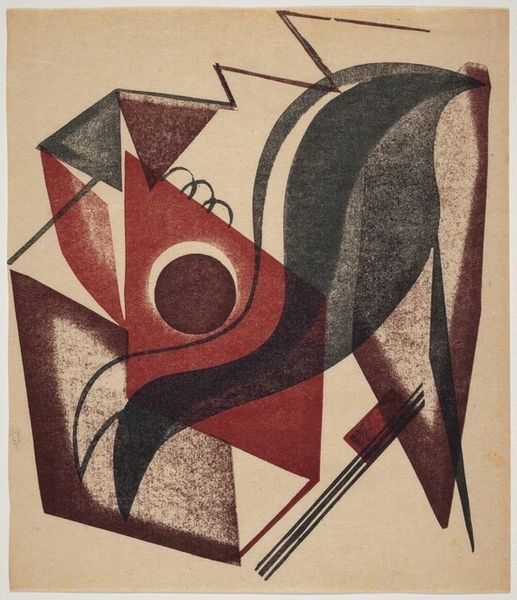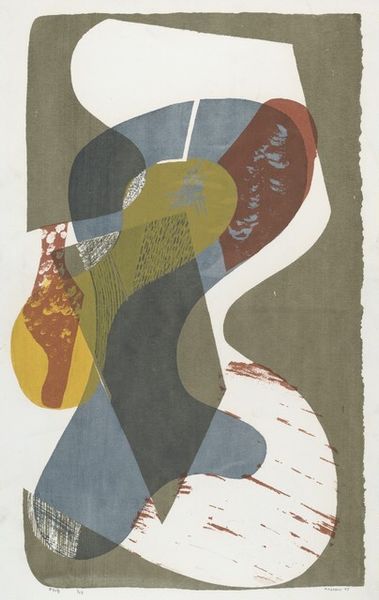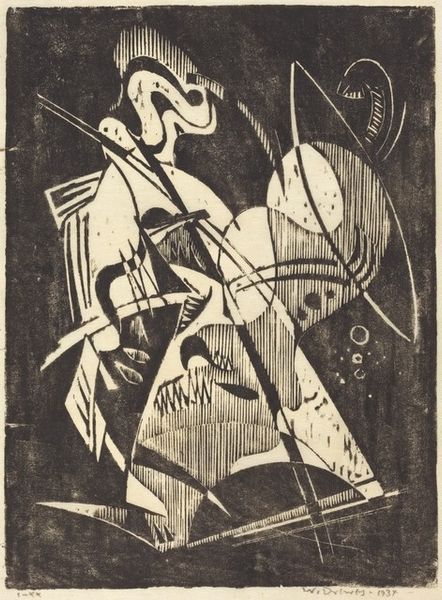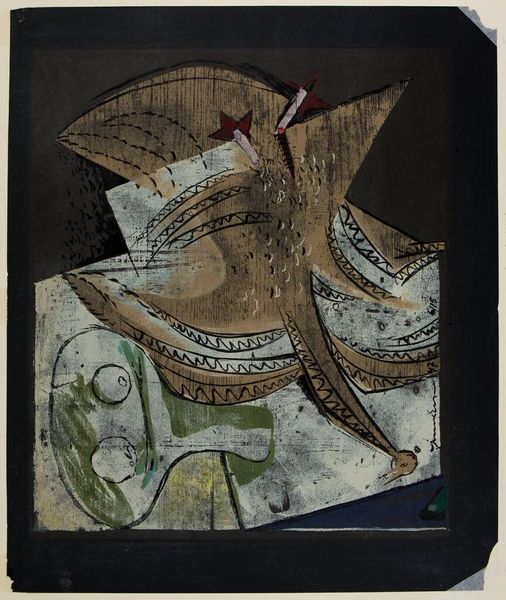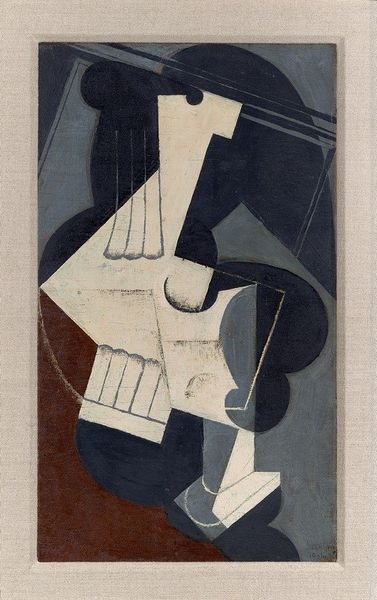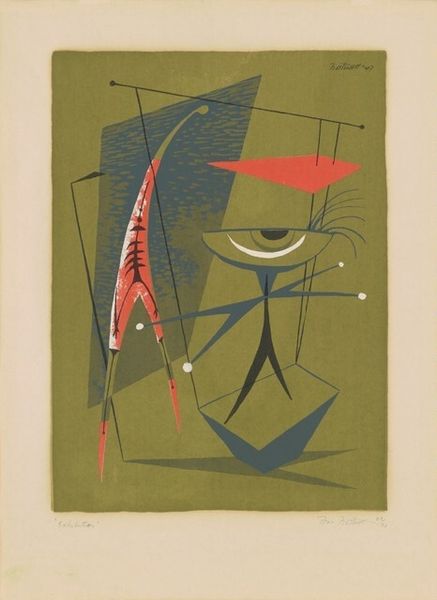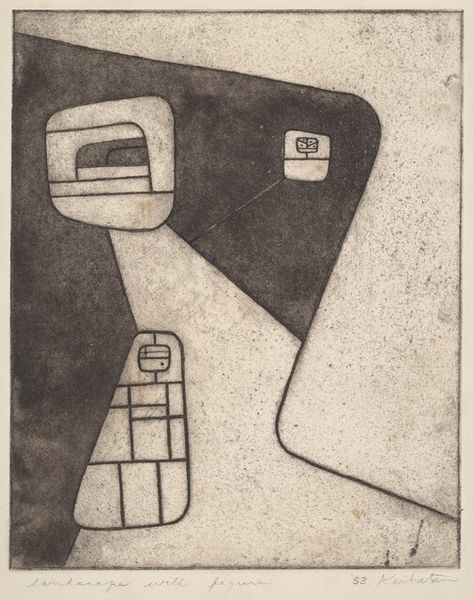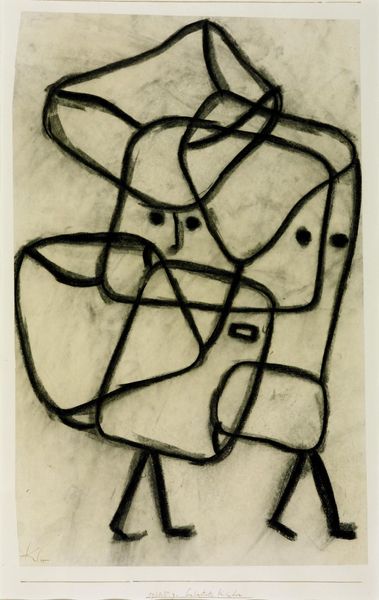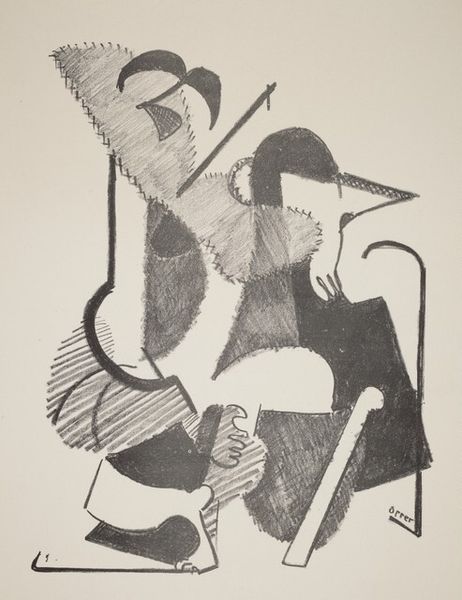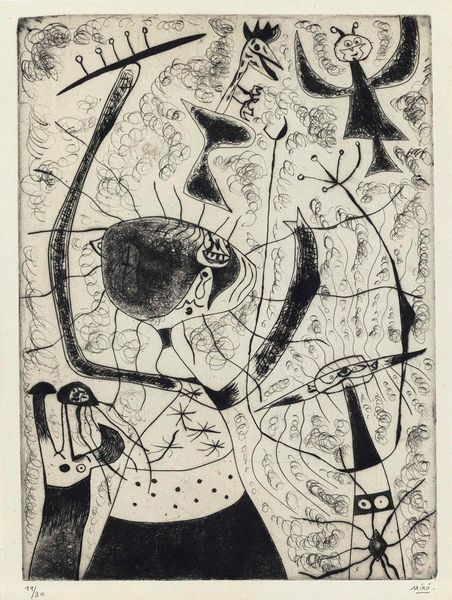
Dimensions: Image: 241 x 201 mm Sheet: 241 x 208 mm
Copyright: National Gallery of Art: CC0 1.0
Editor: Here we have Charles William Smith's "Untitled (Abstraction)," created in 1939. It's a print, and my first impression is one of organized chaos, like peering into a complex machine. What do you see in this piece? Curator: Well, the forms here are quite intriguing, aren't they? This print, for me, feels like an echo of anxieties and aspirations brewing on the eve of World War II. Do you see the interplay between the rigid geometric shapes and those almost biomorphic curves? They aren't just abstract; they seem to be hinting at something just beyond our grasp. The visual vocabulary that Smith employs – the hard-edged forms, the meandering lines – is steeped in symbolism. The geometric forms remind me of constructivist ideals and also hint at something mechanical. Editor: So, it’s like Smith is pulling from different styles, expressing something about that period. Curator: Precisely! What sort of emotion does that stark contrast of line and form create? Editor: A certain tension, definitely. Like progress and maybe the threat of things becoming disjointed. Curator: And where does this artwork seem to be taking you personally, emotionally? Editor: I guess it's a bit unsettling, in a way that makes you contemplate all the things that can get jumbled up. It feels unresolved, but somehow deliberate. Curator: Indeed, these sorts of forms can be used as social commentaries on rapid social or technological change, such as mass industrialisation. Cultural memory certainly resides in the use of abstract geometry here. Editor: I never considered it in light of the cultural memory behind those symbols. It changes the whole experience. Thanks for shedding some light on the historical weight behind the images. Curator: My pleasure, It's all about understanding the power of imagery.
Comments
No comments
Be the first to comment and join the conversation on the ultimate creative platform.
